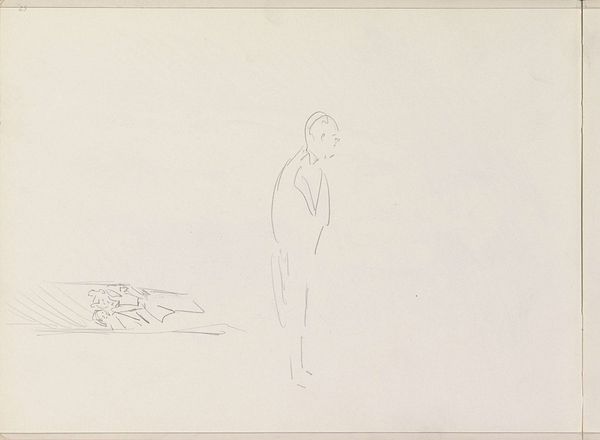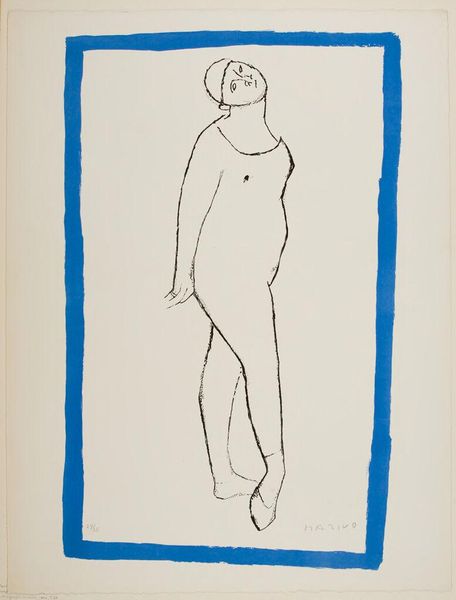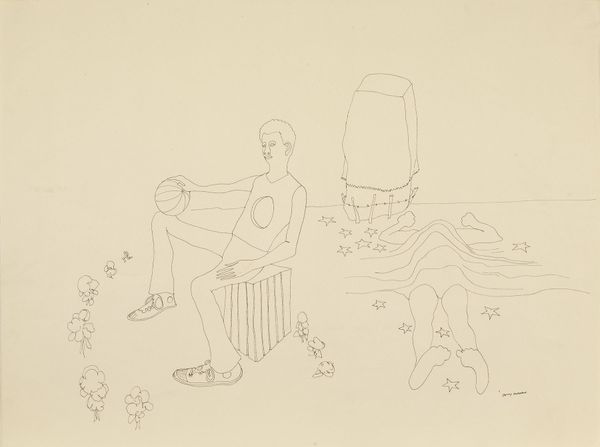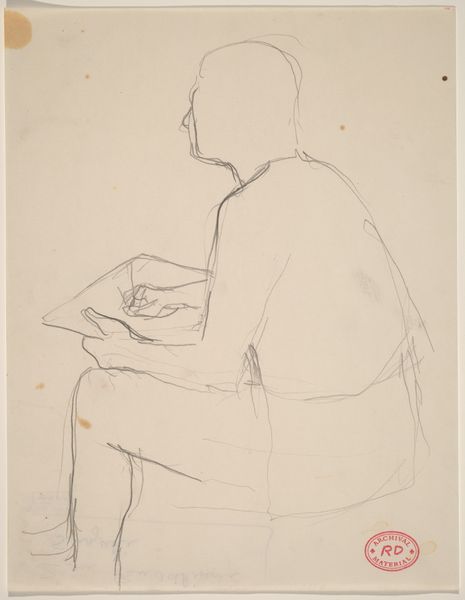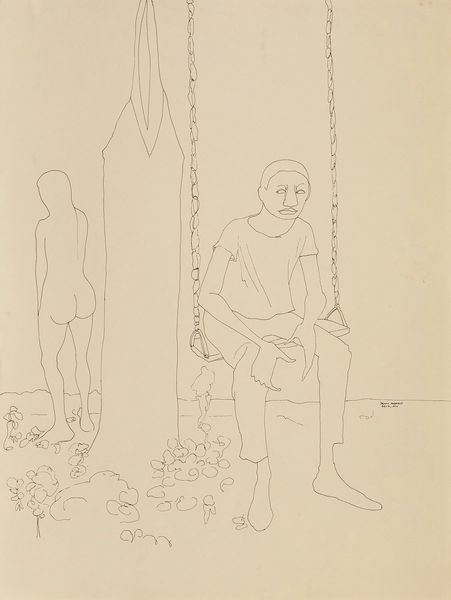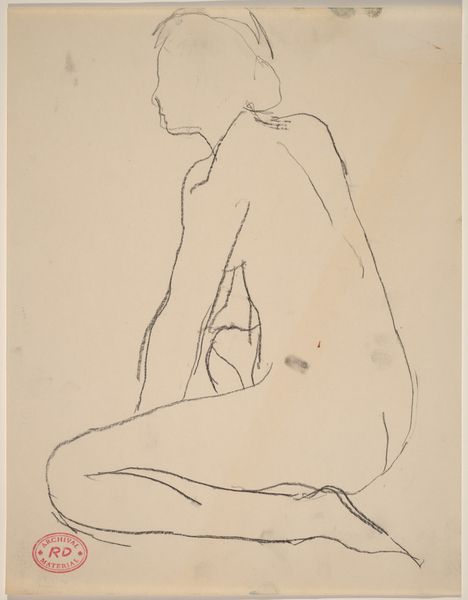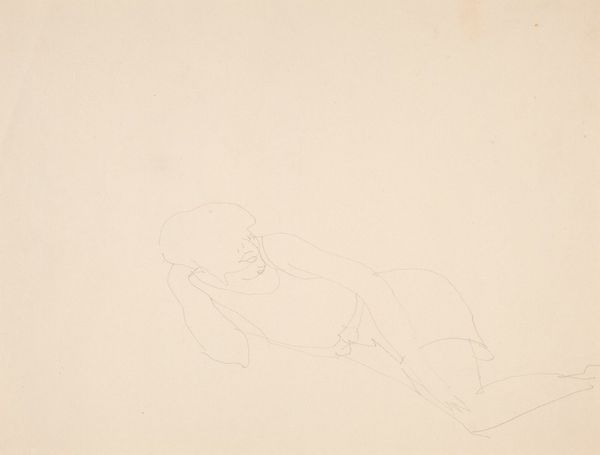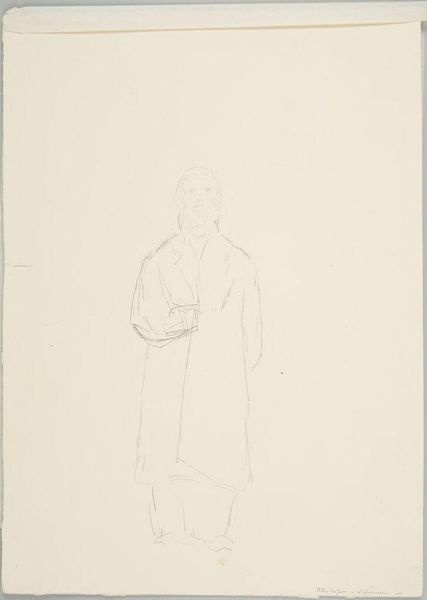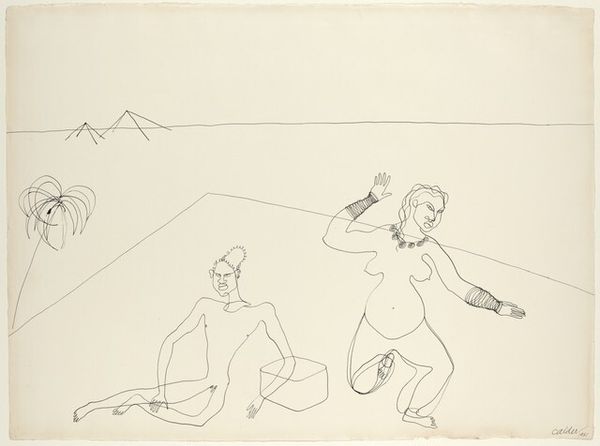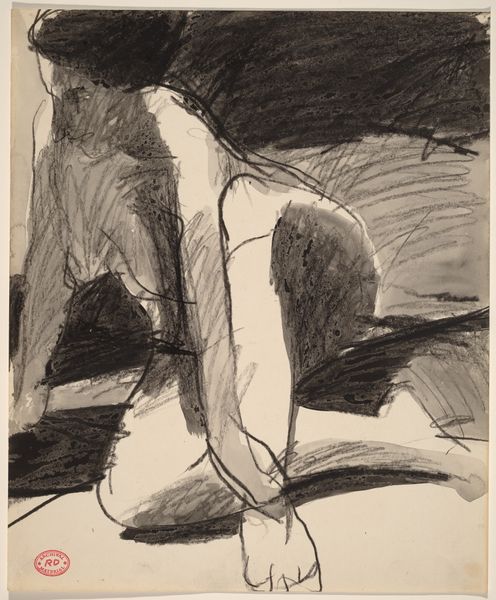
drawing
#
drawing
#
amateur sketch
#
light pencil work
#
thin stroke sketch
#
shading to add clarity
#
pencil sketch
#
incomplete sketchy
#
idea generation sketch
#
dynamic sketch
#
sketch
#
pen-ink sketch
#
initial sketch
Dimensions: 18 x 12 cm
Copyright: Benny Andrews,Fair Use
Editor: So, this is Benny Andrews’ "War Study #17," created in 1974. It’s a drawing – seemingly pencil on paper. There’s a woman, appears to be pregnant, standing by a broken-down structure… almost like a crude ladder falling apart. The simplicity of the lines makes it seem vulnerable. What strikes you when you look at this, especially given its title? Curator: The starkness of the materials speaks volumes. Pencil on paper – so immediate, so accessible. Think about that against the backdrop of 1974. The Vietnam War was still raging. Consider the *means* of production. Andrews isn't using oil paints or bronze, materials associated with grand, heroic narratives of war. Instead, he opts for humble graphite and paper, materials readily available, easily discarded. It’s a democratizing gesture. Editor: That’s a fascinating point. The disposability contrasts sharply with the permanence we often associate with war memorials. Does the medium affect your interpretation of the female figure? Curator: Absolutely. The fragility of the drawing enhances the woman's vulnerability, her round belly emphasizing life in a context of destruction. And the ladder… or what's left of it. Its brokenness underscores the failed promises of progress, perhaps the very ideologies used to justify the war. The materials highlight the unfulfilled potential, the labor wasted. This artwork shows labor disrupted, exploited, turned towards destructive ends, and contrasts the life-giving power of the pregnant woman. Editor: I hadn't considered the labor aspect so directly. I was so focused on the personal, the implied narrative of the woman… Curator: It’s easy to do. But Andrews pushes us to look at the bigger picture: who profits, who suffers, and what materials – both human and physical – are used and abused in the process. It makes the image quite radical. Editor: I see that now. Thank you – that definitely reframed my understanding. Curator: Mine, too. Looking closely at the materials, the process, the conditions of production...it always reveals deeper meanings.
Comments
No comments
Be the first to comment and join the conversation on the ultimate creative platform.
